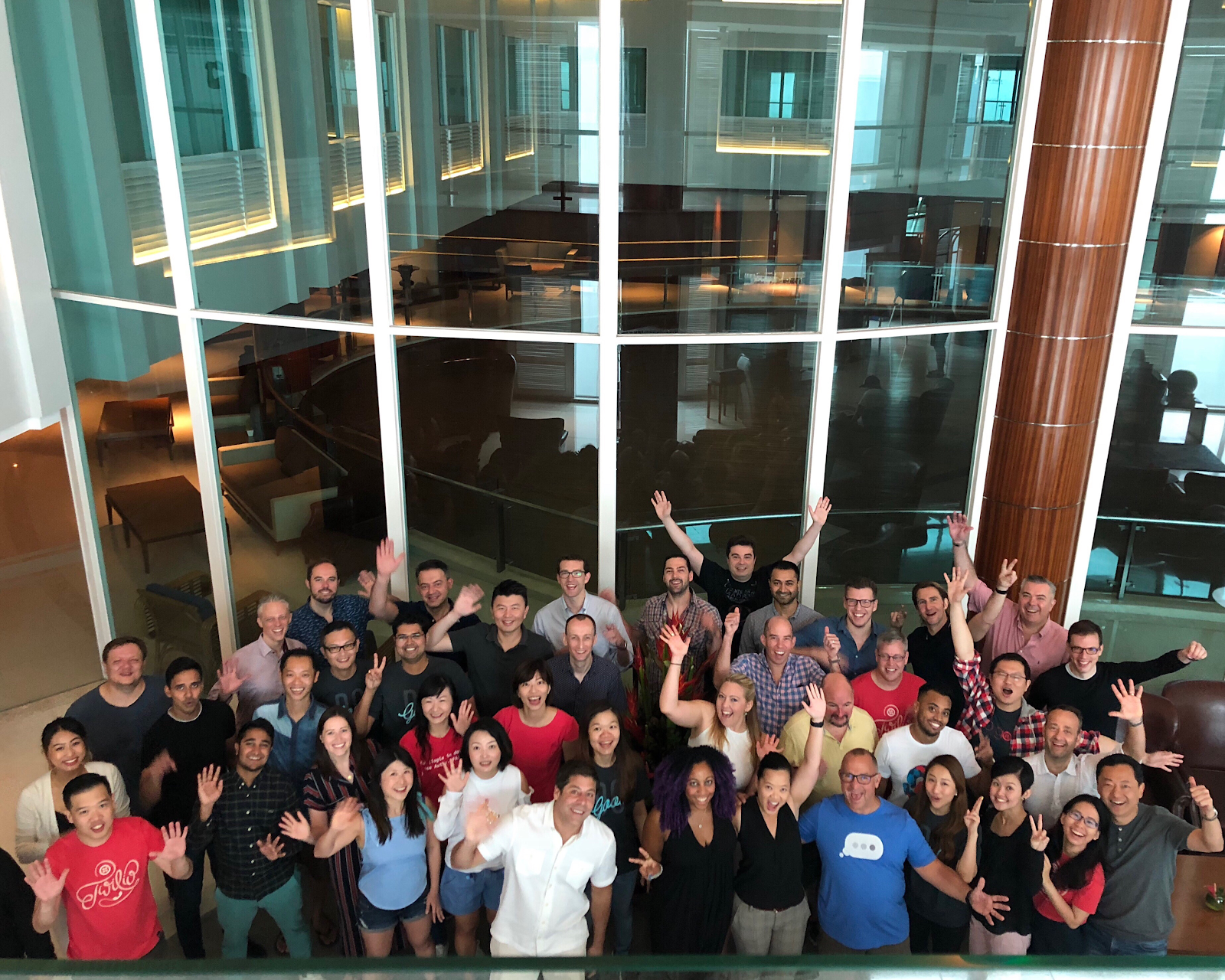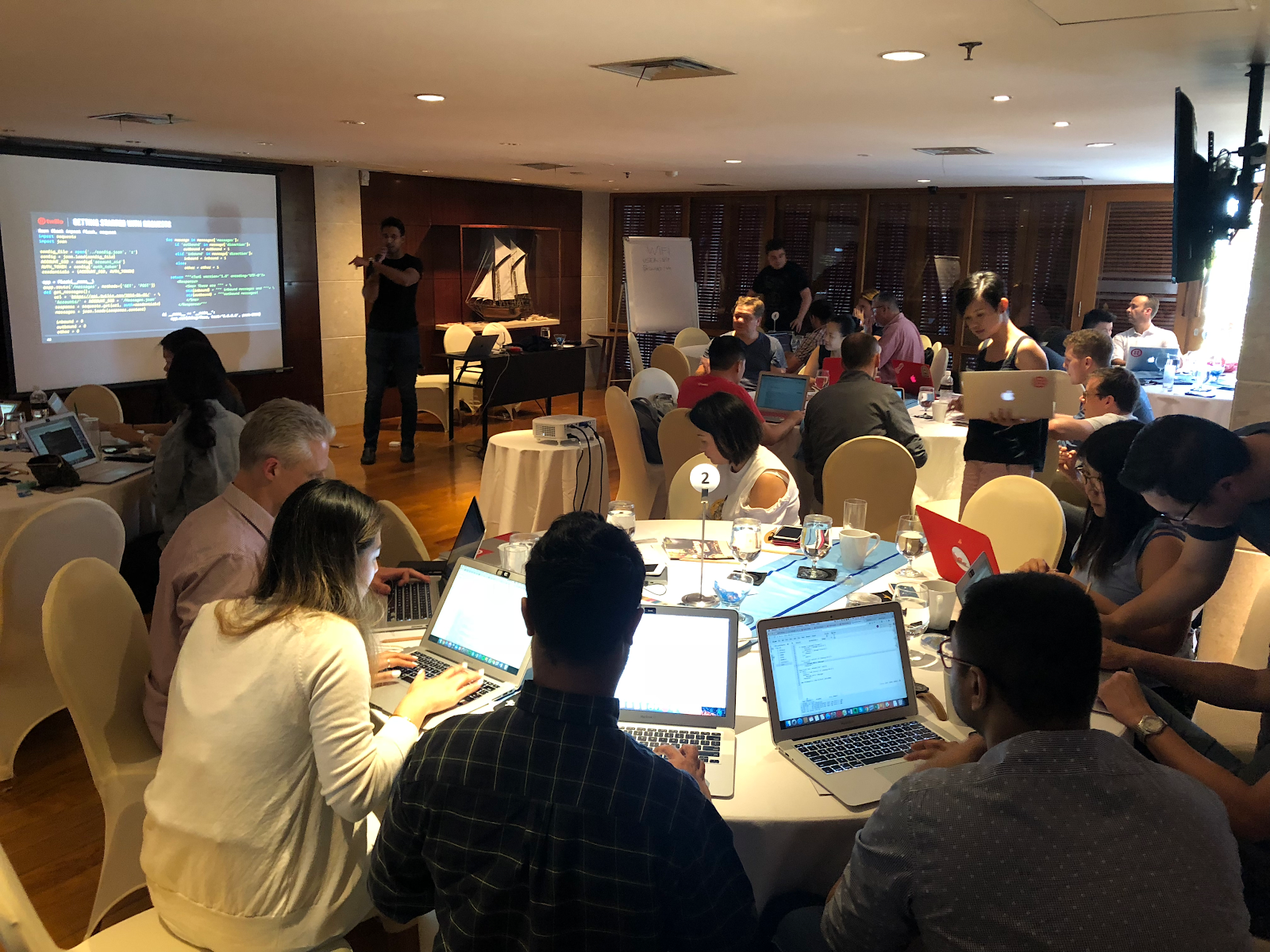How we took Twilio Bootcamp global with WhatsApp
Time to read:

Bharat Murali is a Technical Lead on Twilio’s Growth Team. In his 5 years at Twilio, he has worked across multiple product stacks while also founding Twilio Bootcamp - a volunteer-led program that is now a part of Twilio’s employee onboarding experience.
Customer Empathy at Twilio
If you take a walk through the Twilio HQ in San Francisco, you may be surprised to find the occasional pair of shoes lining the walls and counters. This may seem like a peculiar taste in decor to most; but to Twilions, it serves as a constant reminder of one of our core values - to always “wear the customer's shoes”.
In Twilio’s early days as a fledgling startup, customer empathy came naturally. Employees wore multiple hats and worked directly with customers constantly - fully aware of their needs and their experience with our products. As the company grew and these roles became more specialized and distant from the customer, this culture gradually began to fade. In an effort to preserve what we believed was the cornerstone of designing, building, marketing and selling our products effectively, we started Twilio Bootcamp - a week-long course that taught every new employee at the company how to code and build on Twilio.
It seemed like a strange proposal at first - why would people in non-technical roles need to learn a skill they would never directly use in their jobs? The truth is that selling, marketing and promoting any product effectively requires the ability to understand how your customer may perceive your product - strengths and shortcomings included. In Twilio’s case, this demographic is dominated by software developers. Bootcamp was created with a vision to bridge that gap.
Twilio Bootcamp
Bootcamp focuses primarily on Messaging — one of our most popular products. SMS also happens to be the most widely used communication channel in the world - making it the ideal medium for new employees to understand Twilio’s inner workings. On Day 1 of the course for example, we teach students how the inbound SMS flow works by using TwiML Bins to auto-respond to incoming messages. This is often what we call the first “Aha!” moment for students; the moment where they first see a text message making its way end-to-end from the carrier, through Twilio and back to their phones.
The success of Twilio’s Bootcamp program is rooted in the ease of our SMS product. In all but 5 days, students go from having no coding experience to building apps that they continue to use months and even years later. Throwing a party at home? Use Felipe Sandoval’s Party Playlist, where you can text in the name of a song to queue it to your party’s Spotify playlist. Visiting a country without a data connection? No worries - use Joe Florez’s app to get turn by turn directions texted to you. As the program’s founder, I’m still amazed, session after session, by what people are empowered to build on our platform in such a short window of time.
Globalizing the program
Bootcamp has become an integral part of the employee onboarding experience here in San Francisco. As Twilio has grown to over 1500 employees and more than 15 offices globally, we have been pushing to expand this program to our offices in Europe and Asia. Starting the program in Europe was fairly straightforward - the large pool of SMS enabled local phone numbers and handsets meant that we could replicate most of what we did in HQ.
Asia wasn’t quite as simple. Our Singapore, Hong Kong, Sydney and Melbourne offices were coming together for a couple of days in Bali, Indonesia - which gave us the opportunity to organize our first accelerated Bootcamp session in the region. SMS regulations vary drastically from country to country however, and unlike most European countries, Indonesia doesn’t allow programmable SMS enabled numbers. For a program that hinged so critically on SMS, this proved to be significant roadblock.

The power of the Twilio Sandbox for WhatsApp
As we were deliberating between a few equally undesirable options, it struck me that we were launching the Twilio API for WhatsApp three days before the event. The proposition of using the integration was attractive - in theory, all students needed was internet connectivity to be able to send and receive messages via WhatsApp. As a bonus, it was low in cost and eliminated our local handset requirements. However, it did also come with its risks. The sandbox was going to be made available a mere 3 days before the start of Bootcamp, and given our incredibly tight schedule, it had to be a seamless transition from our SMS experience. Regardless, after some deliberation and an impressive two minute demo of the Sandbox from our product team, I decided to take the plunge.

The WhatsApp integration proved to be a huge success at our first-ever pan-Asian Bootcamp:
1. It was intuitive
Considering that our audience was comprised primarily of non-technical employees who were new to the Twilio product, I was pleasantly surprised by how quickly they managed to grasp the concepts of how the integration worked. The detailed documentation coupled with the simple setup was critical in getting them up and running quickly.
2. It was reliable
Unlike SMS, which can be affected by unpredictable and complicated telecom networks, our integration with WhatsApp is completely internet based, which means that messages are sent and received instantly and with high reliability. This helped students get immediate feedback when navigating their way through the course and testing their applications.
3. The integration with the Messaging API was seamless
The ease of integration with the Messaging API was a huge win for both the teachers and the students of the program. For me, it meant that I had to make very minor edits to my code and lecture slides to use WhatsApp. For students, it meant that their application could easily be altered to support both WhatsApp and SMS.
4. Global reach
Ultimately, the power of this integration lies in its global reach. People from 5 different countries could come together in a different location and send and receive messages without having to worry about local handsets and telecom providers. That’s an experience that would never have been possible with SMS.
As Twilio continues to grow its offices globally, this integration has the laid the foundation for how Bootcamp will scale with the company. If you have not tried it yet, set up your console in the Sandbox and give it a shot!
We can’t wait to see what you build.
Related Posts
Related Resources
Twilio Docs
From APIs to SDKs to sample apps
API reference documentation, SDKs, helper libraries, quickstarts, and tutorials for your language and platform.
Resource Center
The latest ebooks, industry reports, and webinars
Learn from customer engagement experts to improve your own communication.
Ahoy
Twilio's developer community hub
Best practices, code samples, and inspiration to build communications and digital engagement experiences.

